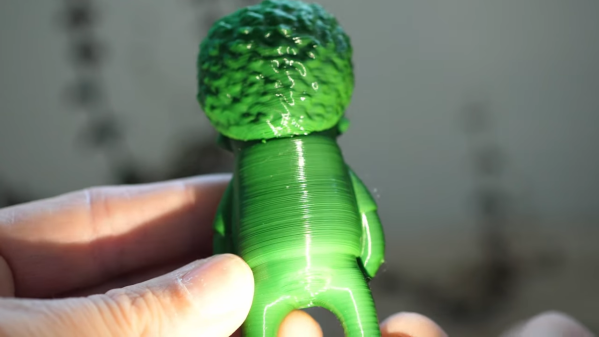In general, the simpler a thing is, the better. That doesn’t appear to apply to engines, though, at least not how we’ve been building them. Pistons, cranks, valves, and seals, all operating in a synchronized mechanical ballet to extract useful work out of some fossilized plankton.
It doesn’t have to be that way, though, if the clever engineering behind this wobbling disk air engine is any indication. [Retsetman] built the engine as a proof-of-concept, and the design seems well suited to 3D printing. The driven element of the engine is a disk attached to the equator of a sphere — think of a model of Saturn — with a shaft running through its axis. The shaft is tilted from the vertical by 20° and attached to arms at the top and bottom, forming a Z shape. The whole assembly lives inside a block with intake and exhaust ports. In operation, compressed air enters the block and pushes down on the upper surface of the disk. This rotates the disc and shaft until the disc moves above the inlet port, at which point the compressed air pushes on the underside of the disc to continue rotation.
[Resetman] went through several iterations before getting everything to work. The main problems were getting proper seals between the disc and the block, and overcoming the friction of all-plastic construction. In addition to the FDM block he also had one printed from clear resin; as you can see in the video below, this gives a nice look at the engine’s innards in motion. We’d imagine a version made from aluminum or steel would work even better.
If [Resetman]’s style seems familiar, it’s with good reason. We’ve featured plenty of his clever mechanisms, like this pericyclic gearbox and his toothless magnetic gearboxes.
Continue reading “A Wobble Disk Air Motor With One Moving Part”












